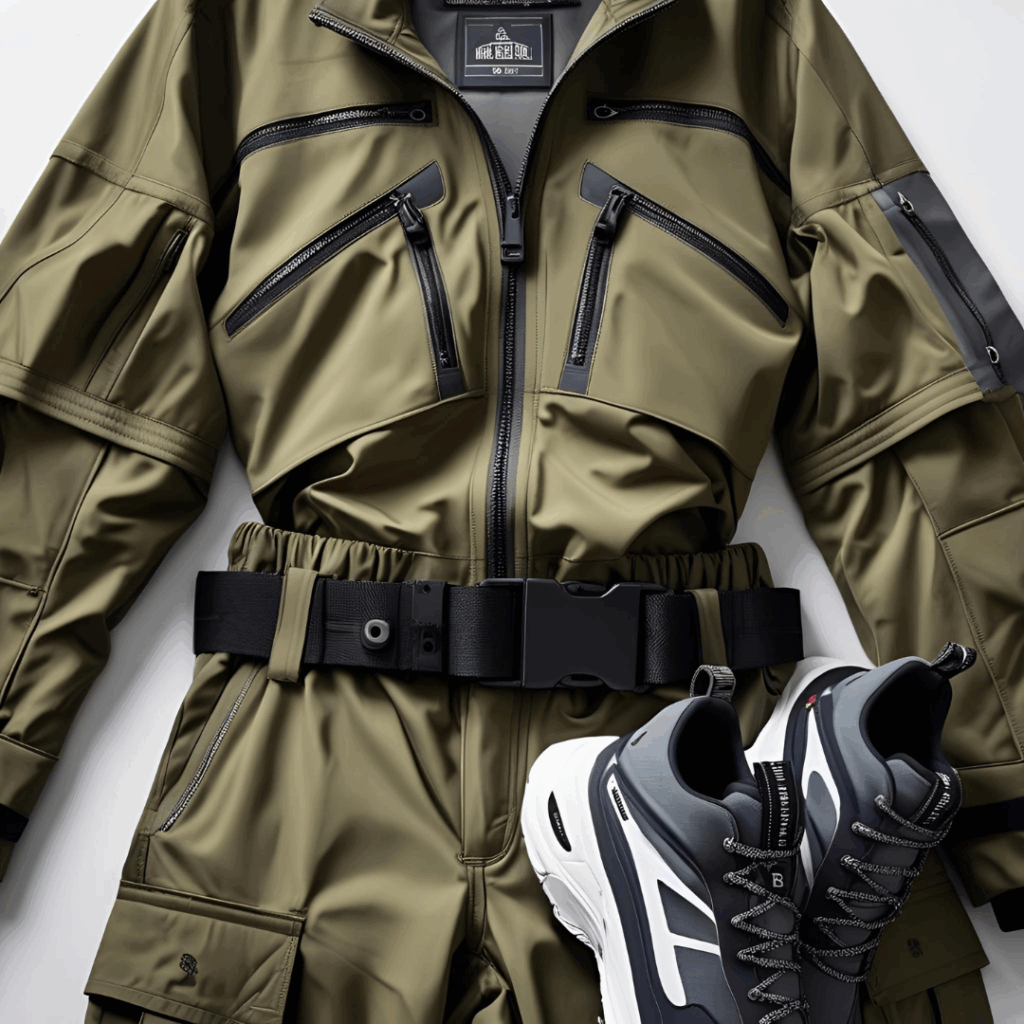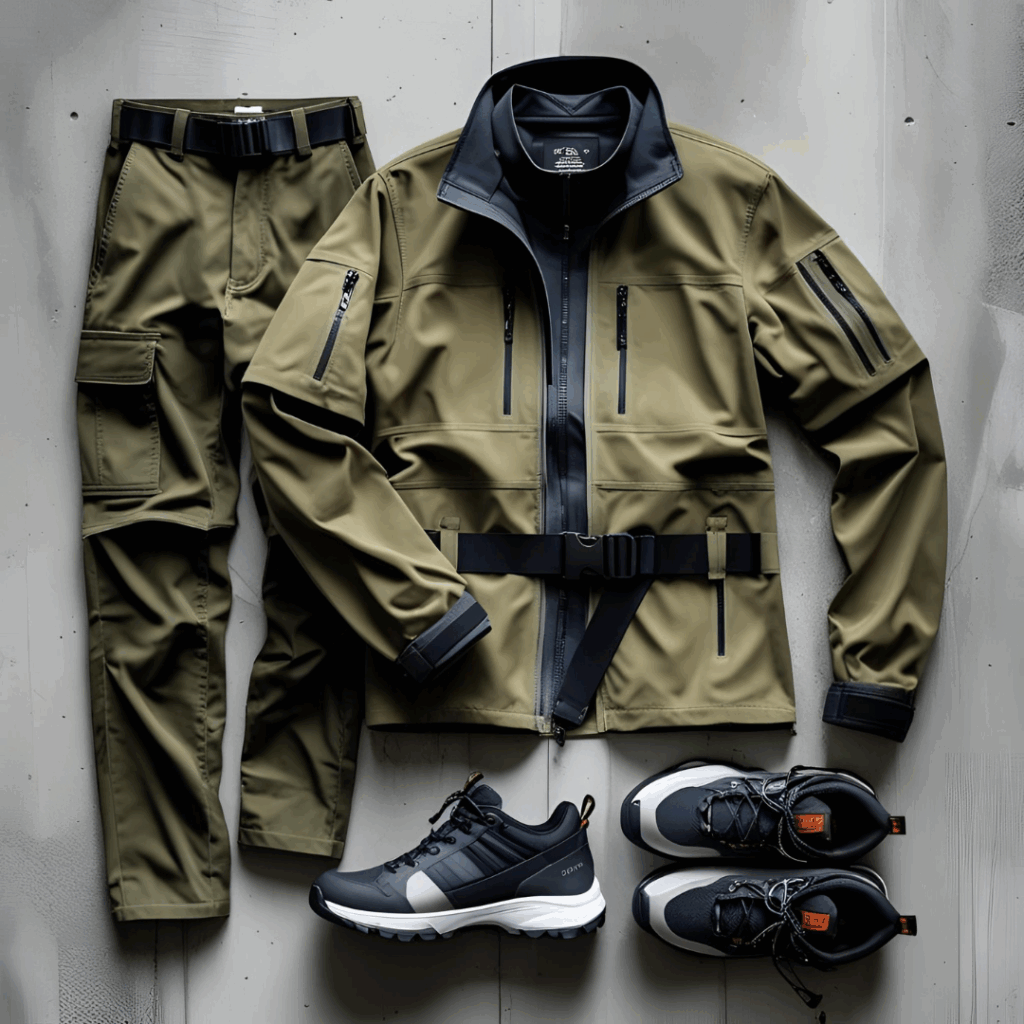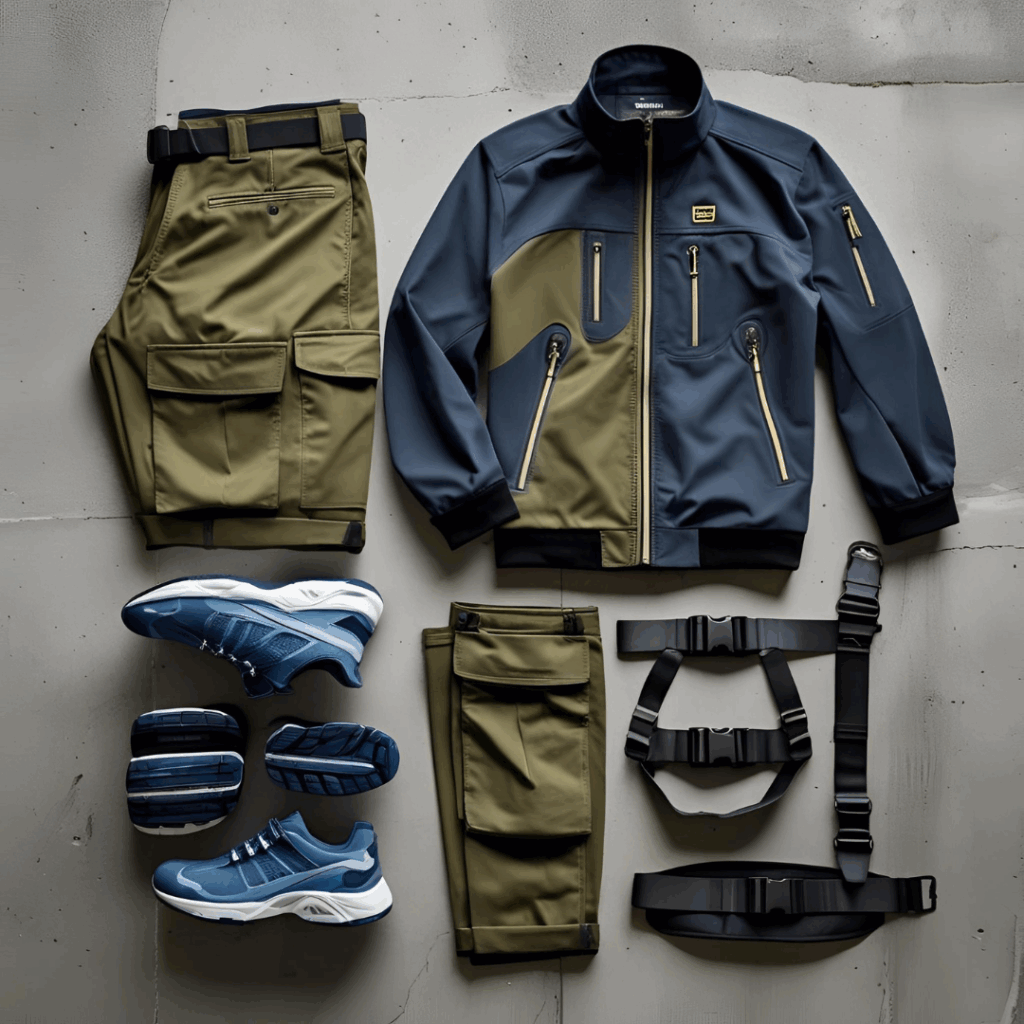Blending function with form, utilitarian fashion takes cues from military uniforms, mountaineering gear, and industrial design to create clothing that works as hard as you do—without sacrificing style. From hidden pockets to integrated belts, the utilitarian aesthetic proves that practical details can be just as eye-catching as embellishments.
The Practical Look: Pockets, Zippers, and Integrated Belts
Function-driven details are the hallmark of utility style. Designers have turned everyday hardware into fashion statements.
Multi-Purpose Pockets
- Cargo pockets: Originally for field maps and tools, oversized cargo pockets now appear on skirts, dresses, and blazers.
- Hidden zip pockets: Seam-concealed compartments keep valuables secure on commute or travel.
- Modular attachments: Detachable pouches and carabiner loops allow for customizable storage on belts or jackets.
Heavy-Duty Zippers
- Two-way zips: Let you adjust a garment’s fit or transform a jogger into shorts.
- Exposed teeth: Over-sized zipper teeth become bold, graphic lines down sleeves and pant legs.
- Quick-release hardware: Snap-off pulls and magnetic closures combine ease with an industrial edge.
Integrated Belts and Straps
- Built-in waist cinchers: Webbing or rope belts threaded through channels add definition and function.
- Adjustable harnesses: Inspired by climbing gear, harness details double as fashion accents and support systems.
- Suspenders and straps: Removable straps can convert overalls to shorts or cinch a coat for warmth.


Inspirations: Military, Mountaineering, and Industrial Design
Utilitarian fashion draws from rugged disciplines, translating gear-grade materials into everyday wear.
Military Roots
- Camouflage palettes: Olive greens, khakis, and muted earth tones remain a staple.
- Structured silhouettes: Field jackets, combat boots, and epaulets nod to army uniforms.
- Durable fabrics: Ripstop nylon, canvas, and drill cotton ensure longevity under wear.
Mountaineering Influence
- Layer-friendly cuts: Roomy arms and articulated knees allow for underlayers and movement.
- Technical fabrics: Waterproof membranes, breathable meshes, and taped seams keep you dry on the go.
- Performance details: Reinforced knees, adjustable cuffs, and helmet-compatible hoods crossover into streetwear.
Industrial Design Elements
- Raw hardware: Exposed rivets, grommets, and riveted seams highlight construction.
- Monochrome palettes: Steely grays, charcoal blacks, and metallic accents reflect factory finishes.
- Minimalist form: Simple lines and geometric panels echo machinery aesthetics.

How to Create Stylish yet Functional Looks
You don’t have to sacrifice sophistication for utility. Here’s how to balance both:
1. Start with a Neutral Base
Select one or two neutral pieces—black cargo pants, a khaki shirt jacket—to anchor your outfit.
2. Layer with Purpose
Add a lightweight shell or vest with multiple pockets. Each layer should serve a role—storage, warmth, or weather protection.
3. Accessorize with Gear-Grade Details
Choose belts, bags, and shoes with utilitarian features: buckle-fast closures, strap attachments, or reinforced toes.
4. Mix Textures and Tones
Pair matte ripstop pants with a glossy rain shell. Break up olive drab with a crisp white tee or a sliver of metallic hardware.
5. Keep Silhouettes Clean
Despite all the hardware, opt for streamlined cuts. Overly baggy garments can look sloppy; embrace tailored fits that still allow movement.
The Utilitarian Aesthetic on the Runway
High fashion has embraced utility, elevating rugged details into couture.
- Designer Shows: Brands such as Prada and Balenciaga have featured cargo-laden dresses and zip-off gowns.
- Tech-Wear Labels: Specialized labels like ACRONYM and Stone Island focus exclusively on performance fabrics and engineering.
- Collaborations: Partnerships between outdoor brands (e.g., The North Face × Gucci) bring utilitarian DNA to luxury markets.
As runway trends filter down to street style, functional features become accessible—proof that when practicality meets design, everyone wins.
Frequently Asked Questions (FAQ)
What defines “utilitarian fashion”?
Utilitarian fashion emphasizes functional details—pockets, durable fabrics, and hardware—while maintaining an intentional aesthetic.
Can I wear utility pieces in a professional setting?
Yes. Opt for structured blazers with hidden pockets or tailored cargo trousers in dark neutrals to blend utility with formality.
How do I care for technical fabrics?
Follow care labels: wash cold, hang to dry, and avoid fabric softeners that can damage water-repellent coatings.
Where can I find budget-friendly utility wear?
Stores like Uniqlo, H&M’s divided lines, and thrift shops often stock functional staples at accessible price points.







